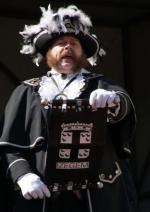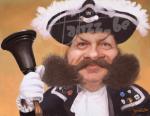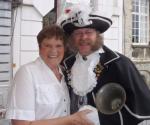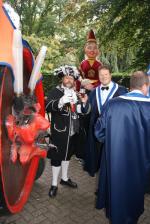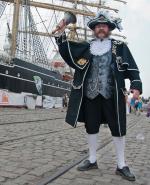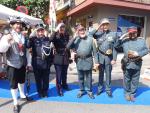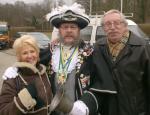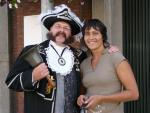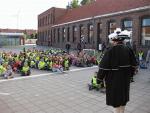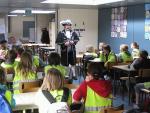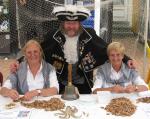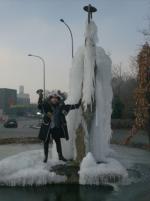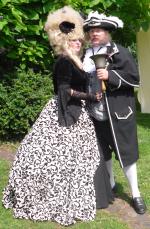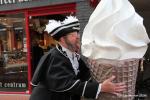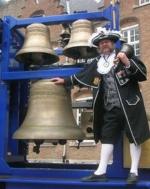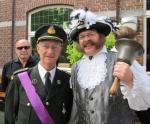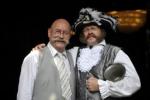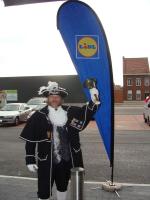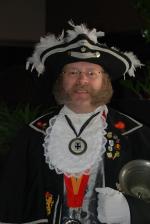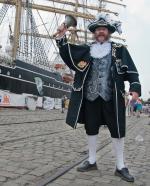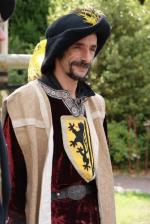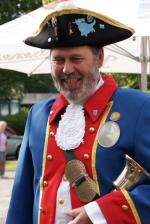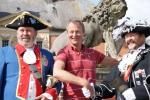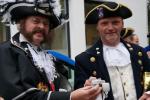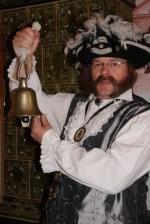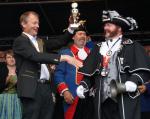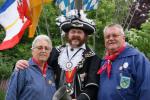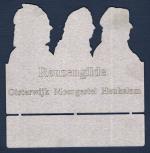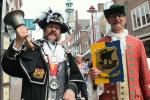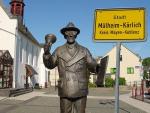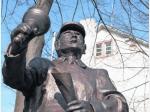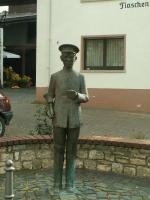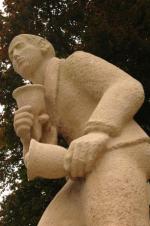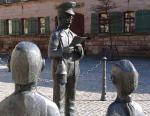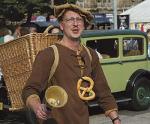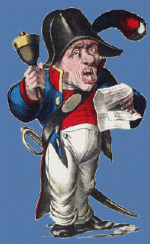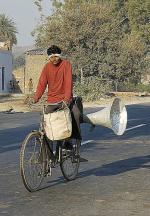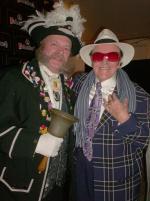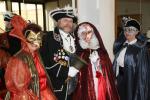|

JOSEPH RAPHAEL (American, 1869-1950)
The Town Crier and his Family
1905
Signed l/c: Jos. M. Raphael
Oil on canvas
78 x 66 inches
Provenance:
Raphael Weill, San Francisco, by 1906
Gift of Raphael Weill to the M.H. de Young Memorial Museum (now the Fine Arts Museums of San Francisco), Jan. 3, 1908
Exhibitions:
Paris, Salon of the Societe des Arts Francais, 1905 (received honorable mention)
Chicago, Art Institute of Chicago, Nov. 1905, (titled 'Public Crier and his Family')
San Francisco, Mark Hopkins Institute, Fifty-Third Exhibition of the San Francisco Art Association, March 12 - April 1906, cat. no. 272, pg. 19, (illustrated) (titled 'The New Town Crier'), owned by Mr. Weill
San Francisco, Bohemian Club, Green Room, 1908
San Francisco, Golden Gate Park Memorial Museum, First Exhibition of Painting and Sculpture by California Artists, 1915, cat. no. 127
San Francisco, Golden Gate Park Memorial Museum, Second Exhibition of Painting and Sculpture by California Artists, 1916, cat. no. 129
Oakland, Oakland Museum of Art, 1960-1976
Artist:
Joseph Raphael was one of the most original impressionist painters from Northern California, and his work was extremely influential in the development of Impressionism in the state. Although essentially an expatriate, he stayed closely connected to San Francisco returning frequently from Belgium and the Netherlands and regularly sending paintings for exhibition. His european residency exposed him to the work of the French impressionists, Van Gogh and the Dutch modernist painters whose exposure drew him toward a post impressionist handling of paint. He exhibited in the Panama-Pacific International Exposition in San Francisco in 1915, the Panama California International Exposition in San Diego the same year, and numerous exhibitions with the San Francisco Art Association and at the Oakland Art Gallery.
He began his training at the California School of Design under Arthur Mathews, then continued at the Ecole des Beaux Arts in 1902. He chose to leave this school and join the Academie Julian where he could pursue his interest in Impressionism. During these early years, he divided his time between Paris and the artist colony at Laren, near Amsterdam. Living primarily in Laren, he painted mainly figurative compositions executed in a dark manner derived from the Dutch masters. He achieved considerable success in this style; his large oil 'La Fete du Bourgmestre' received an honorable mention at the Paris Salon of 1906 and was subsequently purchased by a group of friend in San Francisco and given to the San Franciso Art Association. In 1910, he had a solo exhibition at the San Francisco Institue of Art and beginning in 1913 Helgesen Galleries, an important venue for modernist art gave him annual exhibitions at its location on Sutter Streeet. He also participated in the annual group shows at the Institute of Art.
By 1912, he was married and residing in the rural suburb of Brussels, Uccle and in 1914 purchased land and built a small house in Krikeput (Cherry Valley) just southof Uccle. There he had views southeast to Lindebeek Village which would figure often in his art and Papakasteel (the Pope's Castle). Here he worked out of doors turning to flowering fields of tulips, hyacinth, rhododendrons, fruit orchards and weeping willows for his subject literally engulfing himself in nature. His work of this period is distinguished by thick, turbulent brushwork similar to that of van Gogh whose work he had no doubt seen in exhibitions in Paris and Amsterdam in 1905. He sent his paintings to his patron Albert Bender in San Francisco who encouraged patronage of Raphael's work especially among the large Jewish community of the Bay Area. He was awarded a silver medal at the Panama Pacific International Exposition in San Francisco in 1915 where six of his paintings were exhibited.
During World War I, his subjects varied from scenes of family life to documenation of the disturbing wartime events as they unfolded in their lives. Raphael and his family, four daughters and one son remained in Belgium until 1929. By the early 1930's Raphael and his family were living in a suburb of Leiden, in Holland and the artist painted often in nearby Bruges. In 1939, warned of the growing hostilities toward Jews in Europe by his devoted friend Bender, he returned to San Francisco where he was to spend the rest of his life. His paintings are noted for their thick, expressive application of paint and stroke-by-stroke build-up of color. Primarily an oil painter, Raphael also expressed himself through watercolors, etchings, pen and ink drawings, and woodcuts.
Subject:
'The Town Crier and his Family' is one of the artist's two best known works painted during the his first decade of painting in Holland at the artist colony of Laren. The other monumental group portrait also of 1905 was the celebrated 'La Fete du Bourgmestre' depicting the mayor of Laren. Laren was home to the Hague School (1870-1900) which had as its members such artists as Willam and Jacob Maris, Hendrick Mesdag and Jozef Israels. Their tonal palette and interior figural compositions appealed to the artist as did their naturalistic imagery. Raphael's powerful rendering of Dutch peasantry also incorporated elements of portraiture from such 17th century Dutch masters as Frans Hals and Rembrandt. These Salon paintings were well received in Paris as well as in exhibitions in the United States at the Chicago Art Institute, the Pennsylvania Academy and the San Francisco Art Institute.
The painting depicts Jan de Leeuw who was town crier and 'afslager' of Laren. In his role as 'afslager', he auctioned houses and land as well as oversaw the sale of home contents and paintings. The sealed papers in his left hand pertain to his duties as 'afslager'. The rattle depicted in this painting has resided in the De Leeuw family, by descent from Jan
De Leeuw (1890-1973) who was town crier of Laren from his father before him (also a town cirer) and grandfather portrayed here. Raphael also made a painting of Mien De Leeuw. The earring that is evident worn by De Leuuw might suggest that the subject was a fisherman, as there were fishing villages near Laren but according to an elderly resident of the village, men in Laren were known to wear an earring as well.
Fortunately, the painting survived the San Francisco earthquake of 1906, and that year was acquired by Raphael Weill, a successful drygoods merchant who owned the White House Department Store. A strong supporter of the arts, he donated the work to the M.H. de Young
Memorial Museum (now the Fine Arts Museums of San Francisco) in 1908.
The Gallery wishes to thank Ineke Middag and Agnes de Rijk of the Singer Laren Museum for their generous assistance in our research and cataloguing of this painting.
|


